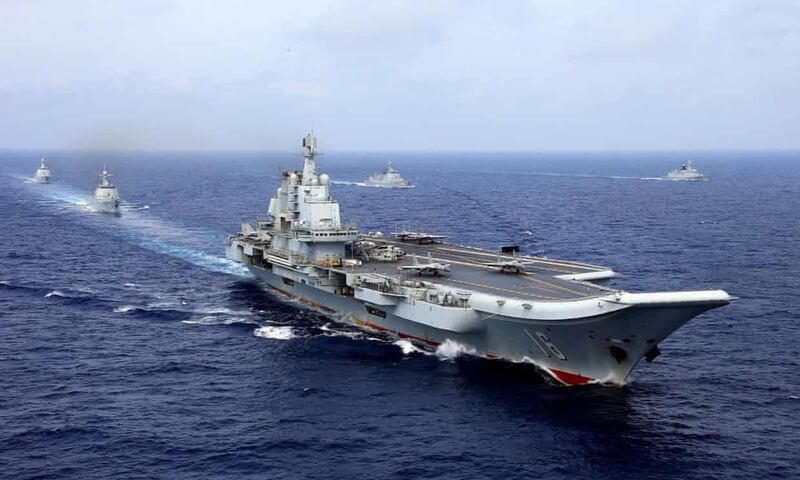China has recently deployed both of its active aircraft carriers on combat-oriented drills in the South China Sea, an indication that Beijing is growing more confident about its carrier fleet’s capabilities, said analysts.
The second aircraft carrier of the People's Liberation Army (PLA) Navy, the Shandong, was sent on a multi-disciplinary exercise aimed at improving combat readiness, reported the Chinese Communist Party's mouthpiece the People's Daily.
The crew will take part in a number of drills including arrested landings of fighter jets, damage control and maritime search and rescue, the report said.
It did not specify the location nor the timing of the exercise and only said the carrier embarked on the mission in early winter.
The People's Daily sister publication, the Global Times, said the carrier is now sailing the South China Sea.
Meanwhile, the PLA Navy’s first carrier, the Liaoning, and its escorting ships are on a routine exercise in the Pacific Ocean that may see them perform drills in the South China Sea and near Taiwan.
Japan's Ministry of Defense Joint Staff said in a press release at the weekend that the Japanese navy despatched airplanes and ships, including the Izumo helicopter destroyer, to follow and monitor the movement of the Liaoning strike group when it sailed through waters between Okinawa and Miyako islands.
The strike group comprises the Liaoning, the Type 055 large destroyer Nanchang, the Type 054A frigate Rizhao and the Type 901 comprehensive supply ship Hulunhu.
They were first spotted on Dec.15 and now are sailing southwards to the Philippine Sea after conducting ship-based aircraft take-off and landing exercises.
The Liaoning transited the Miyako Strait twice in April while it carried out drills near Taiwan and the South China Sea, and observers say the pattern may repeat this time.

Supporting strategic interests
In a separate development, the guided-missile frigate Wuzhou under the PLA Southern Theater Command conducted a maritime training operation earlier this month in the South China Sea, marking a very busy period for the PLA Navy in the region.
“Having two carriers at sea at almost the same time, plus supporting vessels, shows that the PLA Navy is becoming increasingly confident about using these assets to project power in support of China's strategic interests,” said Ian Storey, senior fellow at the ISEAS-Yusof Ishak Institute in Singapore.
“Aircraft carriers are complex and costly, which is why so few navies operate them,” said Storey.
“But possessing them allows countries to project power around the globe in ways no other warships can,” he added. “They are the ultimate symbols of major power status.”
In October, three aircraft carriers and a dozen other warships from U.S.-allied nations staged one of the biggest shows of maritime power in the South China Sea.
The U.S. Navy has 11 aircraft carriers, all nuclear-powered. China has the biggest maritime force in the world with 355 ships, but only two aircraft carriers.
Race to develop aircraft carriers
China’s first aircraft carrier Liaoning (Type 001) is a reconstructed Soviet-built aircraft carrier, commissioned into the PLA Navy in 2012. The second one and the first domestically built, Shandong (Type 002), was commissioned in December 2019.
A U.S. Defense Department report on Chinese military released last month said a third aircraft carrier "is projected to be operational by 2024, with additional carriers to follow."
This second domestically built carrier will be larger and fitted with a catapult launch system.
“This design will enable it to support additional fighter aircraft, fixed-wing early-warning aircraft, and more rapid flight operations and thus extend the reach and effectiveness of its carrier-based strike aircraft,” the report said.
Besides China, Japan, Korea and Singapore also harbor super carrier ambitions.
The Japan Maritime Self-Defense Force (JMSDF, or Japanese Navy) is believed to be putting the finishing touches on two Izumo-class destroyers being converted into light aircraft carriers.
The race to develop bigger and better aircraft carriers highlights the precarious situation in the South China Sea, which is seen by observers as one of imminent flashpoints in the Indo-Pacific.
